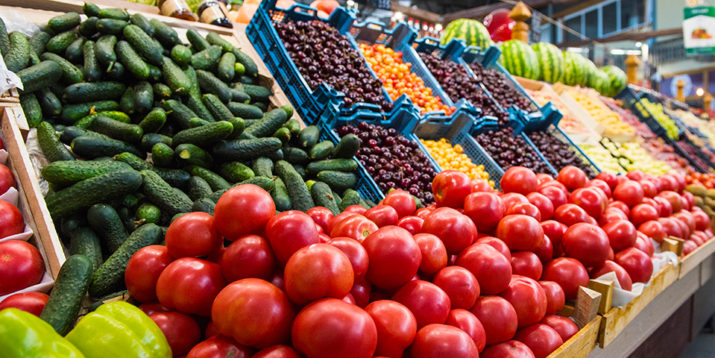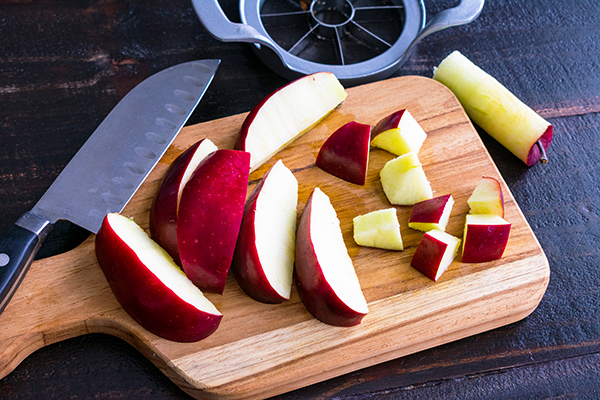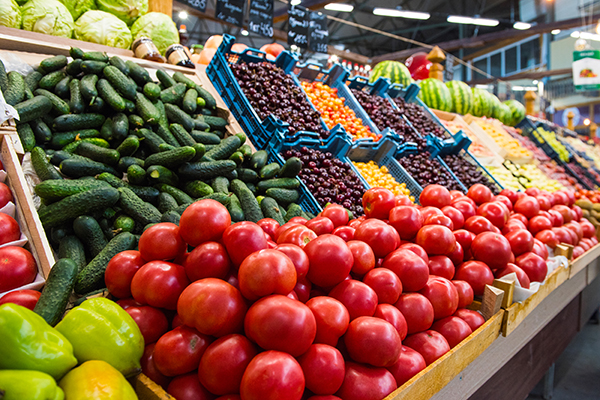What Are GMO Foods?

What do Hawaiian papaya, zucchini, and yellow squash have in common?
Besides being nutritious and delicious, these fruits are examples of foods that may sometimes be genetically modified.
While you’ve likely heard a lot of debate about GMO foods in recent years, it’s not always clear what the heck that means — and whether it’s something you really need to worry about.
Here’s what you need to know about GMO foods.
What Is GMO Food?
GMO is an acronym for “genetically modified organisms.”
“These are living organisms which have had their genetic material altered using genetic engineering to produce an organism that is not naturally occurring in nature,” says Bansari Acharya, R.D.N., a registered dietitian and nutritionist at FoodLove.
In simpler terms, GMO foods are made by inserting desired genes into DNA of natural foods like fruits and veggies.
Why are foods genetically modified?
The reasons vary, but the general benefit of GMOs is that genetic engineering can make certain foods more nutritious, hardier, or easier to produce.
Genetic engineering might be used to improve the taste or nutritional profile of a food.
Or it can make crops more sustainable by making them easier to farm, or resistant to viruses, insects, and harsh weather conditions.
This isn’t an entirely new concept. Farmers have been using techniques like cross-breeding and selective breeding to raise crops and animals with different characteristics.
Strawberries, for example, are the result of crossing two different types of berry species that grow in different parts of the world.
But these techniques can take years — or even decades — to see the results. Controlling the process through genetic modification drastically cuts down the time it takes.

Examples of GMO Foods
So what are the most common GMO foods?
According to the USDA’s 2020 data, more than 94 percent of soybeans and 92 percent of corn planted in the United States were genetically modified.
Most GMO crops are used as ingredients to make other foods.
Sugar beets, for example, are often used to make granulated sugar. Canola — another typical GMO food — is used to make margarine and cooking oil, while GMO soybeans are used as emulsifiers and other ingredients in processed foods.
Certain fruits and veggies may also be genetically modified, including:
- Potatoes. Some GMO potatoes are made to resist insects and disease, while other varieties were developed to be resistant to browning and bruising.
- Apples. Some varieties of apples are genetically modified to resist browning.
- Papaya. A variety of genetically modified papaya — known as Rainbow papaya — was developed to save the fruit in Hawaii after a virus wiped out the crop.
- Summer squash. Zucchini and other summer squash varieties were some of the first GMO foods developed to help keep certain plant viruses at bay.
But these foods make up only a tiny percentage of the GMO foods grown and sold each year in the U.S.
According to the FDA, For the most part, you won’t find many GMO fruits or veggies in the produce aisle.
“When you go to the grocery store, the produce is either conventionally grown or organically grown,” says culinary nutrition specialist Quyen Vu.
Conventionally grown produce may potentially be genetically modified (though it’s not common).
However, the use of genetic engineering is prohibited in organically grown food.
Vu recommends checking the PLU code on the sticker found on produce. If the first digit is a “9,” it’s organically grown, meaning it’s also non-GMO.
If the first digit is a “4,” it’s conventionally grown. “These PLU stickers aren’t regulated, but it gives you a general idea of what is conventionally grown or organic,” Vu says.

Are GMO Foods Okay to Eat?
You may have heard some concern about the safety of GMO foods, but there’s currently no evidence of health risks.
Federal agencies like the U.S. Food and Drug Administration (FDA), the U.S. Environmental Protection Agency (EPA), and the U.S. Department of Agriculture (USDA) consider GMOs to be safe for human consumption and don’t currently require foods to be marked GMO or non-GMO.
You may find some foods marked with the “Non-GMO Project Verified” label.
This verification program was created by a nonprofit as a way for food manufacturers to show that their products are free of GMOs.
And in 2022, the USDA will require food manufacturers to identify foods containing GMO ingredients as “bioengineered foods.”
Until then, if you’d prefer to limit your consumption of GMO foods, keep in mind that the most common genetically modified foods are soybeans, corn, and canola.
So if you buy pre-packaged products from the grocery store that contain ingredients like sugar, corn syrup, soy, or canola oil, there’s a chance it may be made with GMO foods unless it says otherwise.
And consider buying your fruits and veggies at a farmer’s market, where you can ask how they’re grown.
